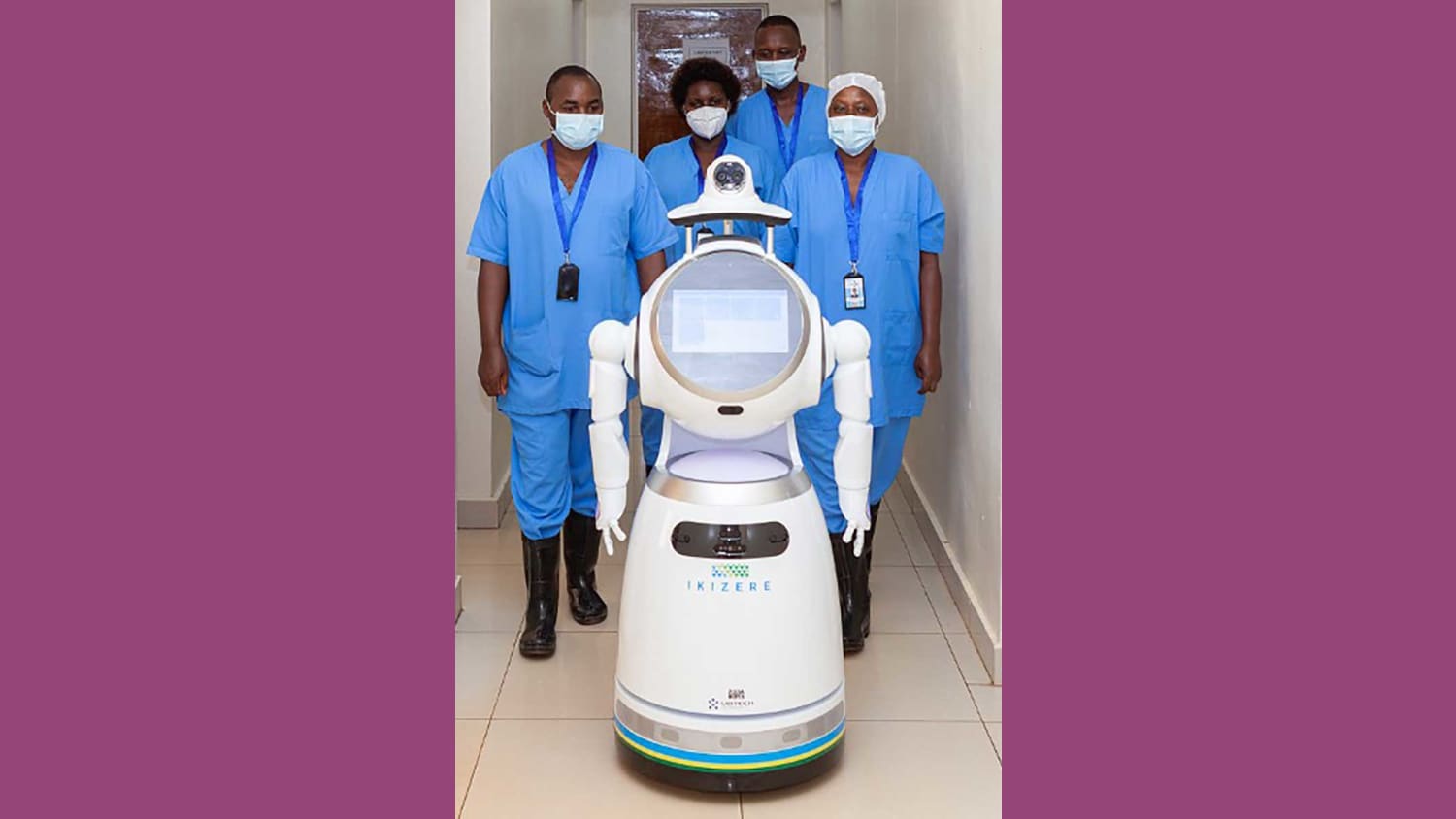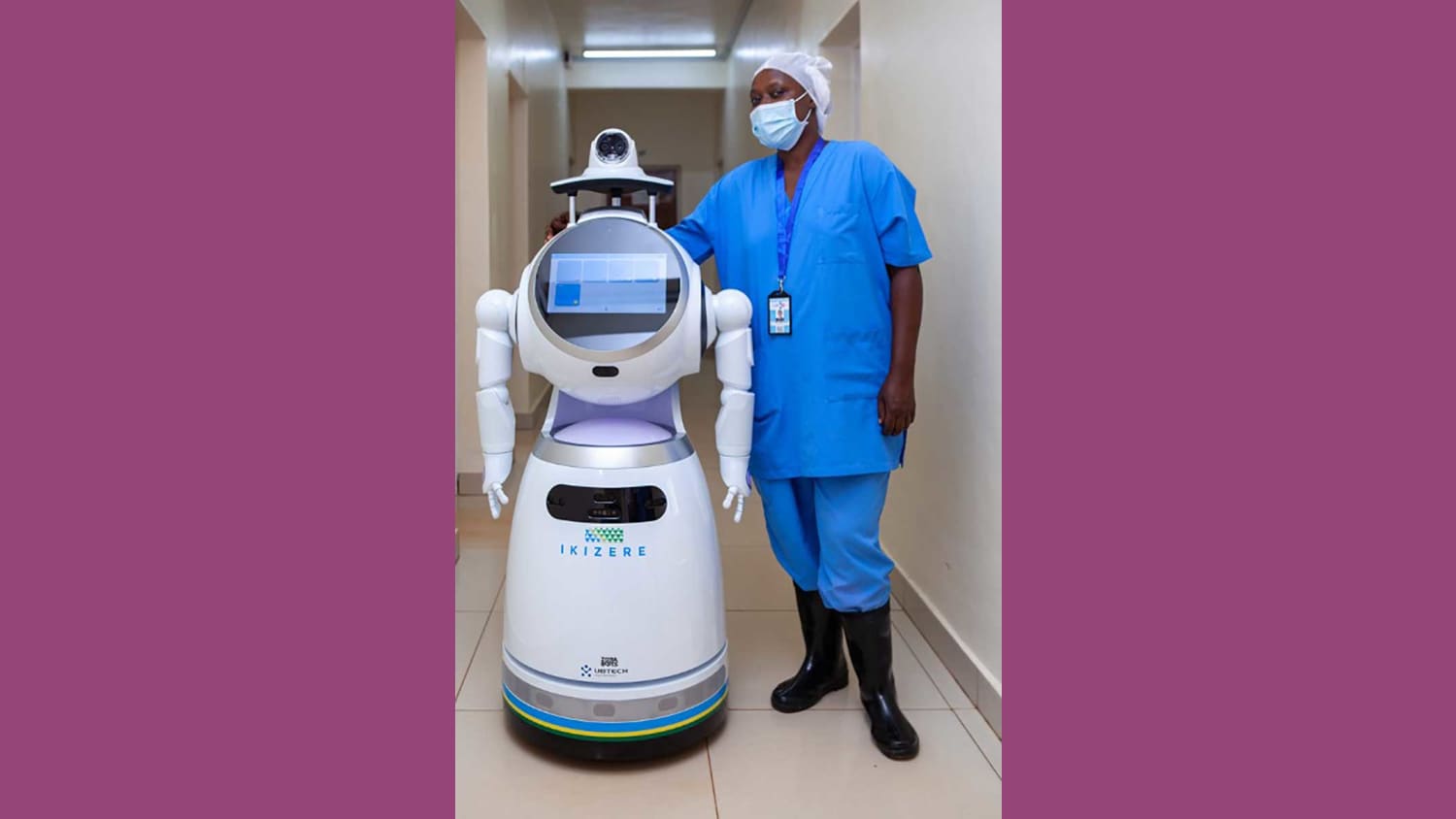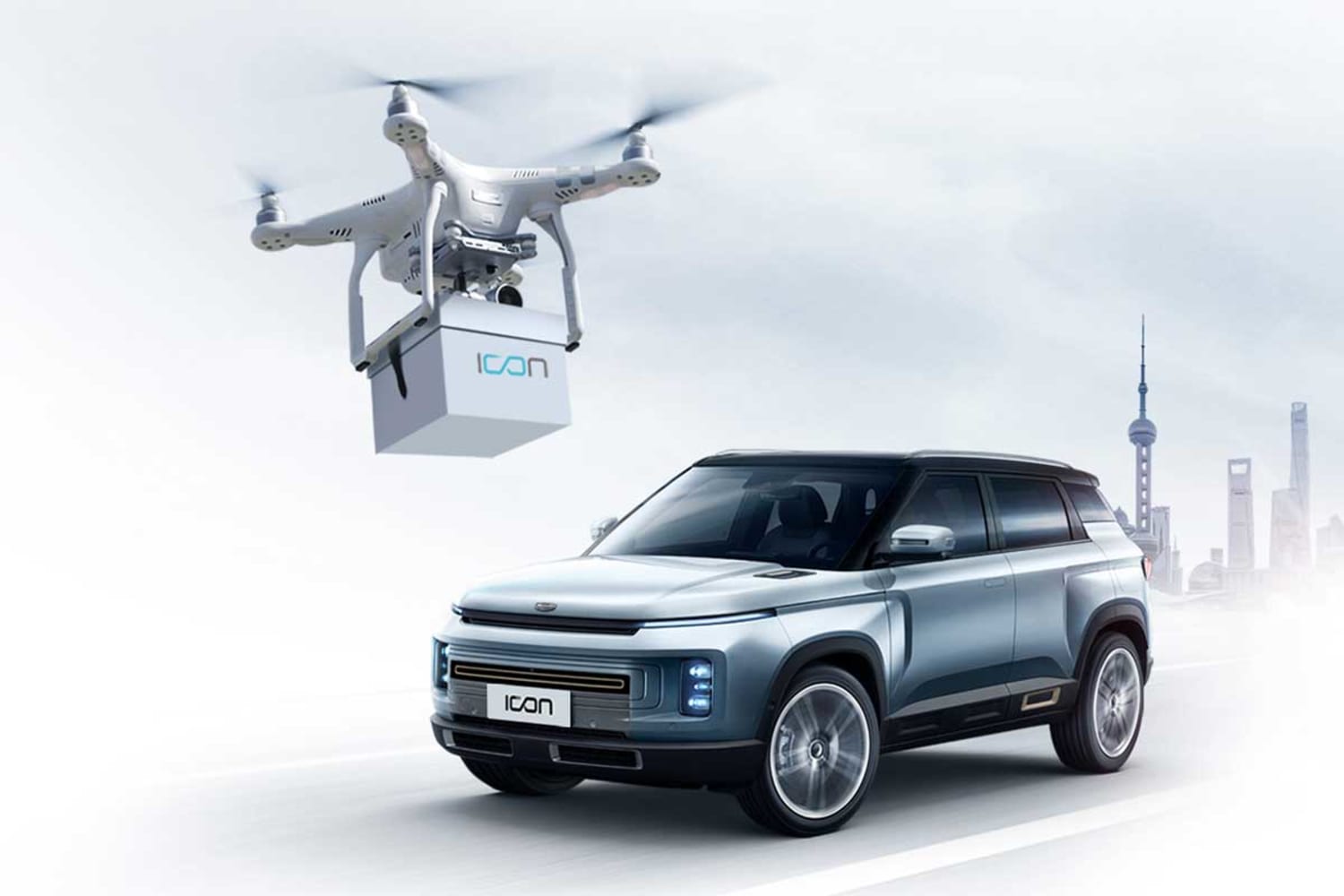Investments in robotics and automation have been increasing exponentially over the past decades, reaching an estimated $16.5 billion in 2019—well before the coronavirus shut down major industries. While in the past, the rise of automation has been blamed as the end of employment for many, new robots are being strategically used to make our lives safer, allowing humans to be redeployed to services that require a (socially distant) human touch.
Robo-workers are being used around the world to help healthcare and other staff do their jobs in more sanitary environments. In the UK, robots from the Self Repairing Cities project are now being trialled as street cleaners helping to disinfect the Leeds city center by spraying disinfectant liquid on high-touch areas like benches. By using robots to disinfect these areas first, human sanitation workers are less likely to be exposed to the virus. Heathrow Airport is taking a similar approach, employing robots to kill viruses on surfaces in bathrooms and elevators with ultraviolet light.










